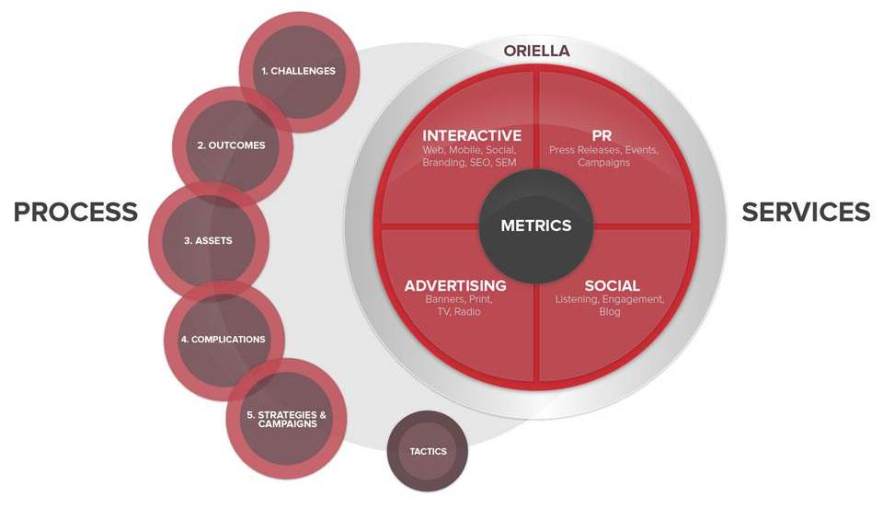PR is going through a fundamental shift that will change how CMOs think about and deploy it forever. Simply put: PR can’t operate in a silo anymore.
Instead, PR pros must now wield multi-disciplinary skill sets. They must be able to weave together traditional PR with social media, interactive, even advertising. They must also be able to tie communications challenges to core business problems and outcomes. That means a greater understanding of business, leadership and company operations overall, across multiple audiences, markets and the global economy.
The bottom line is PR has evolved into digital communications. And for the CMO, that means big changes in how to engage audiences with market brands.
The art of design thinking
Life today is becoming more and more digital. For many of us, it already is. Much of what we do at work and at home has gone online, with technology driving change at an accelerated rate.
In this environment, where everything is connected, PR pros have to think beyond the confines of their traditional upbringing. Specifically, it’s crucial that communicators learn the art of design thinking.
Why? Because the written word and spoken word need graphics, pictures and motion; a company’s brand is affected by all the ways in which it is portrayed, expressed and explained. What makes communications today “digital” is the delicate combination of PR with these interactive Web capabilities and social media — all the channels by which a company now gets the word out about its brand.
Marketing requires an integrated approach
Determining the mix of channels and services that will best market a brand requires a sequential approach that requires thinking beyond siloed communications:
- Identify your primary business challenge. Take a big-picture approach. Rather than determine which campaign should go viral on social media or whip media, identify your main objective or challenge: what business problem are you really trying to solve
- Define success. What are your preferred outcomes? Force yourself to get specific. Lay out what a successful campaign looks like and make sure everyone understands the desired end result.
- Evaluate your strengths and weaknesses. Also critical is an analysis of your company’s assets and complications. This is where it pays to be brutally honest: what’s working for and against you? What can you leverage and what could really get in your way of achieving success?
- Build your communications mix. Only after a comprehensive evaluation of all of these factors can you focus on specific campaigns and ideas. With objectives, success, strengths and weaknesses defined, you’ll be able to better pinpoint the combination of services that fit your specific needs, rather than taking a campaign idea and trying to retrofit it to your business.
The key here is that these campaigns will, by default, be integrated. For example, a company faced with launching a product into a new market can’t implement a viral social campaign that drives people to a sub-par website; that would negate the success of its social efforts. Similarly, a company might choose to run a thought leadership campaign — perhaps including special events in key markets, complete with a celebrity — that’s seeded through traditional publicity pushes. But that company might discover those publicity pushes would be even more effective by requiring consumers to go to the company’s Facebook page — meaning its social presence would need to be up to par as well.
It’s easy, therefore, to see how communications channels are more intertwined than ever before and how the sequence of all these elements is so critical. Gone are the archaic days of using the press release as the single tool to get the word out. Brands need more, and communications pros are uniquely positioned to fill this void.
The shifts in the PR industry mean embracing a new approach. Creating a brand and solving real business problems means thinking much more holistically about communications than ever before. CMOs must be careful to find a new generation of communicators that have broader skills and are able to think differently. These are individuals who think outside of their own four walls, who remember to invite discussion from others who might otherwise never be considered, e.g., HR, Creative Design, Global Managers, Video Producers, Reception, and Customer Service.
These are also people who understand that in today’s world there is no textbook example or reference manual for how to go about this. They make things up as they go along and are willing to test and try new things to see how effective they may be. Trial and error is definitely part of this new era of communications, and has to be factored in to set expectations with executive management. One thing is sure: doing what was done before will not work.
The magic of digital communications — the combination of great storytelling through multiple channels that are conceived, created and executed together — empowers the CMO to take on even the largest business challenges in an organized, strategic way. And that’s what makes this an incredibly exciting time to be a marketer.
Sabrina Horn is founder, CEO and president of HORN. She started HORN in 1991 with the vision to build an agency that would break new ground in the communications industry, in technology markets, employment practices and client service. She has served as a board member on the Council of PR Firms and is a frequent speaker at technology and marketing industry conferences around the country. She has been consistently recognized by PR Week, Holmes Report and Inside PR as one of the PR industry’s most successful entrepreneurs and innovators. Contact her at shorn@horngroup.com.

